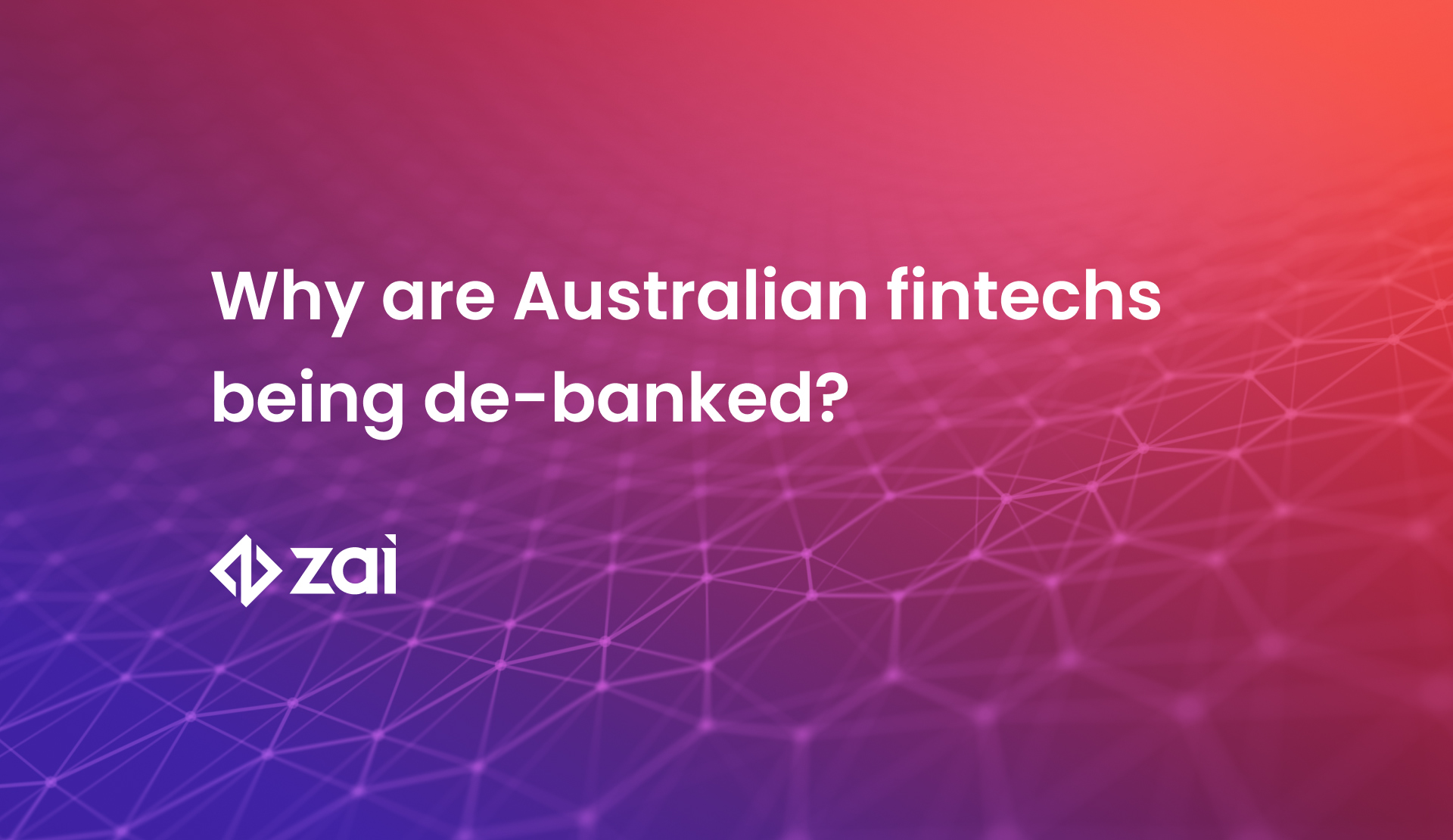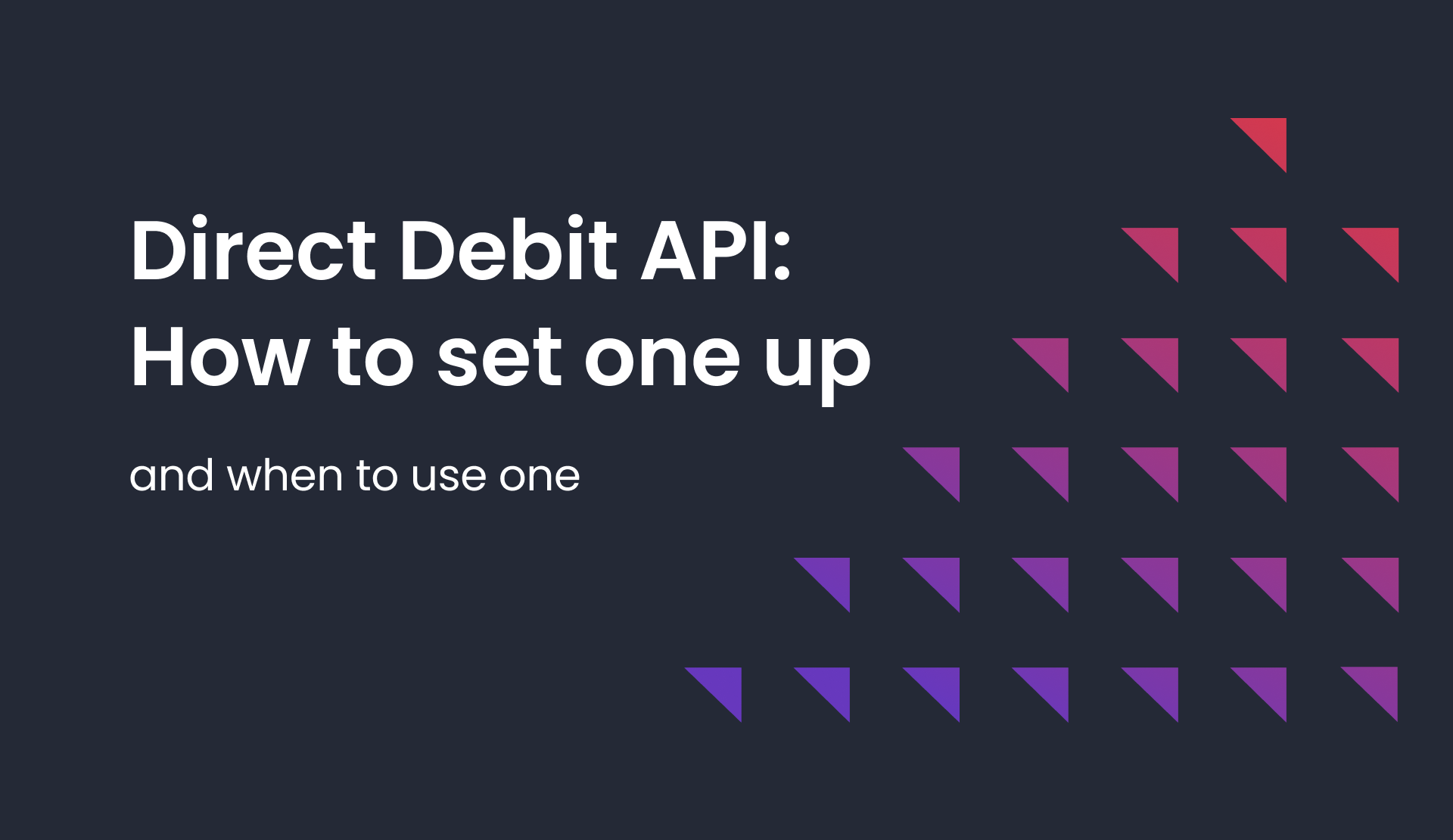One of Australia’s leading neobanks, Volt, recently stunned the financial services industry by announcing its closure.
This surprise development by a leading B2C fintech sent shockwaves through the Australian financial services market, notably since Volt also provided Banking-as-a-Service (BaaS) to other fintechs.
For Australian innovators looking to add banking functionality like deposits and payments, this development means there’s now one less provider to build financial services upon.
What are the options now for Australian disruptors, startups, and others wanting to add financial services with Volt gone?
In this article we’ll cover:
-
What alternatives do Australian fintech companies have now that Volt is gone?
-
What Volt shutting down means for the Australian fintech ecosystem.
Zai is a leading provider of payment solutions in Australia and beyond. We help innovators create fintech products with our various building blocks. Do you need to get to market but need a regulated partner to do so? Speak with us now to see how we can help.
Why Volt closed and what it means for their customers
Volt closed for a few reasons:
-
Bad timing.
-
Economic uncertainty due to Covid.
-
The economic challenges in B2C banking.
-
A market that is hard to crack.
We’ll cover each reason in a bit more detail:
Bad timing
Volt’s downfall largely happened due to poor timing, most of which was out of its control. The company originated in 2018 when the regulatory body Australian Prudential Regulation Authority (APRA) created a new, limited banking licence to encourage innovation.
As the first of four new entities to get a banking licence in decades, Volt entered the market in 2019.
Things for the business were going well at the start, with over 40,000 early-access users onboarded at launch. The startup had ambitious plans for the future, including issuing loans and mortgages - the primary revenue driver of retail banking.
Then, in March 2020, the pandemic hit, flipping retail banking on its head.
The Australian government’s zero-covid policy effectively froze almost all consumer activity for the better part of two years. These measures delayed Volt’s plans to roll out its lending business.
Unfortunately, their financial roadmap depended on getting to this stage sooner rather than later, especially since their deposit accounts were meant to be a loss leader while they scaled their user numbers. This meant Volt had to burn more capital during the pandemic than they would’ve liked to.
Economic uncertainty in 2022
By the time the Australian economy and life started to look normal again, global geopolitics and markets had other plans.
By January of 2022, growth sectors like tech companies that did phenomenally well during the pandemic flashed warning signs of a pending correction. Then, in late February, following Russia’s invasion of Ukraine, the bottom fell out, causing broad sell-offs and, crucially to Volt, a pause in startup financing by venture capitalists.
At this point, Volt needed to raise significant capital to stay afloat. With funding options either shrinking or outright unavailable.
The inability to overcome the economic challenges of B2C neobanking
Digital banking, particularly on the retail level, is notoriously hard to crack. Despite their poor reputation, consumers generally stick with their established banks. Moreover, startups severely underestimate the marketing costs of getting depositors, even if they focus only on a specific niche.
Finally, as we wrote earlier, Volt knew its current accounts were only supposed to bring customers in, not make money from them. Since they couldn’t get to the lucrative lending phase, their cash flows suffered heavily, even if their Banking-as-a-Service B2B product seemed promising.
A notoriously protected market that became impossible to crack
Australia’s banking scene is one of the most protected in the developed world, with large banks taking up most of the market. Despite being part of a promising crop of newly-authorised neobanks and entering a market needing more choice and disruption, Volt largely failed to make a dent in market share.
These factors combined put the writing on the wall for Volt. By the end of June 2022, Volt announced that it was ceasing operations, leaving clients - both B2C and its Banking-as-a-Service B2B users - without accounts and infrastructure.
The impact on Volt customers
Volt’s closure impacted both of their business lines. For B2C account holders, that meant moving their deposits elsewhere and saying goodbye to the digital bank.
For B2B customers, Volt bank accounts’ closure was even more painful. Companies such as remitters, investment platforms, crypto exchanges and anyone needing deposit-taking business services that were building on top of Volt’s regulated stack had to freeze their business activities since the underlying bank accounts were shut.
For these firms, Volt’s closure impacted their operations significantly. In some cases, startups had to shut down, effectively pausing the business activity of their clients. Regardless of how exposed different startups were to Volt, the impact of its closure will ripple through Australian fintech for some time.
What alternatives do Australian fintech companies have for banking as a service now that Volt is gone?
There is currently no direct alternative to Volt, which means that if you were affected by Volt’s closure, your best options are to mix and match with other providers. For example, you might use one provider to take deposits, another to store funds and a different one to disburse them.
Let’s look at the pros and cons of this “mix-and-match” approach:
The pros of a mix-and-match approach
It can help create a unique product by patching various features together.
There’s a broad universe of Banking-as-a-Service products for innovators to build upon. It’s entirely possible to “mix and match” different elements from multiple providers to create your product. In this way, the possibilities are vast, allowing you to develop a service that precisely meets your target audience’s needs.
It offers lots of flexibility.
As you grow, you can add or remove various service providers. For example, you could build a challenger bank with virtual-only cards and, upon customer demand, work with a specialist provider to issue physical ones. Likewise, if you want to offer insurance to your customers, you could plug into an insurtech company’s APIs to deliver. If testing these new tools shows that the economics aren’t there, removing them is as simple as editing code.
It can be more cost-effective.
Shopping around to work with the best provider for each product vertical enables you to manage your costs better. As Volt demonstrated, even the most well-funded fintechs aren’t immune to external forces destroying financial plans. Limiting costs early by working with various providers could help you extend your runway.
Getting a licence is a big deal.
If you eventually get a deposit-taking or other bank licence, you enter a new level of opportunities. Having a licence means you have more latitude with your product offering and growth and an asset on your balance sheet.
The cons of a mix-and-match approach
The tech gets complicated quickly as you add pieces.
Theoretically, adding different pieces as you build shouldn’t get too complicated. However, in practice, the more providers you add, the more that can go wrong.
Tech streams don’t always play nice with each other, especially when one goes through a significant update. Additionally, as you add different pieces, your IT and development team will spend more time maintaining various sources and less on developing the internal features that give you your unique selling proposition in the first place.
The costs become more unpredictable.
The more service providers you add, the more costs you need to cover. In addition to potential setup fees, each provider will have a different cost structure or fees, some of which are variable. This uncertainty harms cash flow forecasting, which, as in the case of Volt, can be fatal for a startup.
Working with a bank has its risks.
You might choose to work with a big bank for some of your product features. With their licences and broad product suite, banks can look like a good fit provider for building regulated products. Unfortunately, Australian banks have limited Banking as a Service offerings.
If you think you can bypass the banks by applying for your own banking licence, there’s no guarantee of approval. (Volt was the first to get a new banking licence issued in Australia since the early 2000s). Plus, going through the process isn’t worth your time as it’s long and filled with risk, which will ultimately distract you from focusing on your core business of providing better financial services.
If you were to mix and match, here are some payment providers that can help you:
Payment providers
Stripe
Stripe is a well-known payment provider and is a great option for companies that want to get set up quickly and start collecting and disbursing payments.
However, they don’t offer localised support in Australia and their product offering is more self-serve and “off the shelf”. This means they won’t be able to offer support if you are looking to expand from card payments and want to set up more complex payment workflows or support fintech products.
Ezidebit
Ezidebit focuses on providing payment solutions for small businesses and is currently part of Global Payments Inc.. Ezidebit is already integrated with many local platforms such as wellness platforms, and they also focus on getting merchants to market and accepting payments quickly.
The company specialises in direct debits and is a good fit if you are looking for a direct debit provider local to Australia.
Read more: Top Direct Debit Solutions in Australia (We Compare 4!)
Monoova
Monoova are specialists in real-time payments and offer various payment solutions for scaling businesses.
Specifically, they offer real-time payments via NPP as well as PayTo and are highly focused on providing a good customer experience. They don’t, however, operate in the card space.
Read more: Stripe Connect Alternatives
Zai
Here at Zai, we started as specialists in custom payment flows and split payments. We now offer a whole range of options, including:
-
(Split) payments and payment flow.
-
Multiple payment methods including NPP, PayTo and cards.
-
Remittance and FX.
-
Crypto exchanges.
-
Fraud protectionto keep your users safe
There are a few benefits to working with us to build your fintech product.
You have access to a full stack of payment services
At Zai, we offer a wide range of services and options as a payment orchestration company. That means that as a fintech, we’ll be able to service a lot of your needs under one platform - limiting the amount of plugging in that you’ll do. This helps reduce a lot of the complexity that comes with working with multiple providers, and it also helps reduce the risk.
You’ll always be able to pay suppliers and customers
Some mix-and-match options are quick to set up, but don’t go through the necessary KYC and account verification process. It means that they’ll go through the process often right when you need to disburse funds, which can delay the process and affect your customers.
You can rely on us being here today, tomorrow, and beyond
Zai is backed by Standard Chartered Bank and its investment arm, SC Ventures, and is operational across multiple countries and regions, including Australia. You can work with us with the knowledge that you’ll be operational as long as needed.
You can build payment flows that fit your business
At Zai, we’re specialists in custom payment flows that work in complex businesses. If you want to set up a unique payment journey that works for your business, then we can help you set that up.
Read more: Split payments API: How Zai's API can help you set up a custom payment workflow
What Volt shutting down means for the Australian fintech ecosystem
Volt’s shutdown made an impact on the Australian fintech ecosystem. Here are a few reasons why:
Fintechs that want to disrupt retail banking in Australia aren’t immune to market volatility – no matter how well-intentioned, big or funded.
Volt was one of the poster children of Australia’s fintech revolution in 2018. Before its collapse, the startup raised over 90 million dollars. It shows that no one is immune to these issues.
Entrepreneurs and startups have one less regulated provider available.
Volt’s Banking-as-a-Service gave entrepreneurs a fully-licenced alternative for deposit infrastructure. With them out of the picture, there’s less choice on the market in the future.
Entrepreneurs and startups are performing more due diligence before going with a provider.
Volt proved that due diligence is still more important than ever when selecting a regulated provider.
A “plan B” contingency provider is more important than ever.
Volt’s surprise closing caught at least one of its B2B users off guard. This firm is now struggling to get back online, which will likely take months (if at all). Having a backup in place is crucial to avoid catastrophic business disruptions.
Retail banks can be everything for everyone. Having success will mean owning your niche from start to hypergrowth.
If the Volt story has told us anything about Australia, it’s that a mass-market neobank isn’t going to put a dent into direct competition. Instead, future neobanks might have a better chance of owning a niche but providing multiple services within that space.
For example, a neobank might target university students by providing them with a wallet, payments, splitting bills with friends, offering insurance, introductory investing and other value-adds that diversify income streams.
Here, the startup could not only own this niche through UX and branding but also minimise costs and risks by working with a singular provider. Partnerships can then fill in the gaps, further protecting your balance sheet.
We might be entering a fintech winter.
The global economy is in a moment of transition and uncertainty. Financial institutions are far from immune to these changes. Unfortunately, as funding shrinks or even disappears, cases like Volt will be more common. If you’re thinking of launching a startup now, plan on being lean, and do your due diligence on providers accordingly.
Why Volt’s demise means choosing your provider wisely
Volt’s collapse could be a watershed moment for Australia’s financial services industry. While the neobanking experiment hatched in 2018 is still to find its feet, a lot of it is due to circumstances. Indeed, when Volt applied for its licence, Australians generally had sour feelings about their banks. It’s hard to believe that's changed four years on.
One lesson is clear for those wanting to continue this quest to disrupt financial services: choose your provider wisely. In addition to Volt’s own mission to help retailers directly, they also began to aid others to do the same. Unfortunately, when they failed, so too did their partners.
At Zai, we’re focusing on building payment tools that help fintech companies create a product that users need, flexible payment flows, remittance services, and foreign exchange, all from one single API source. If that sounds like what you need to bring your passion to market, we’d be happy to speak with you and build the future of Australian finance together. Contact us now to get started.
This information is correct as of December 2022. This information is not to be relied on in making a decision with regard to an investment. We strongly recommend that you obtain independent financial advice before making any form of investment or significant financial transaction. This article is purely for general information purposes.
Sources:
- https://www.ft.com/content/bce8146e-46c5-496e-b71c-4fe625916617
- https://www.reuters.com/business/finance/australias-first-neobank-volt-shut-deposit-taking-business-return-licence-2022-06-29/#:~:text=June%2029%20(Reuters)%20%2D%20Volt,funds%20to%20support%20the%20business
- https://www.altfi.com/article/9459_aussie-neobank-volt-to-close-after-fundraising-failure
- https://www.afr.com/companies/financial-services/volt-bank-to-close-return-100m-deposits-to-customers-20220629-p5axl9
- https://en.wikipedia.org/wiki/Volt_Bank
- https://en.wikipedia.org/wiki/Authorised_deposit-taking_institution#Restricted_ADI
- https://stripe.com/gb/payments/features
- https://www.ezidebit.com/en-au/payment-solutions/direct-debit
- https://www.monoova.com/platform



